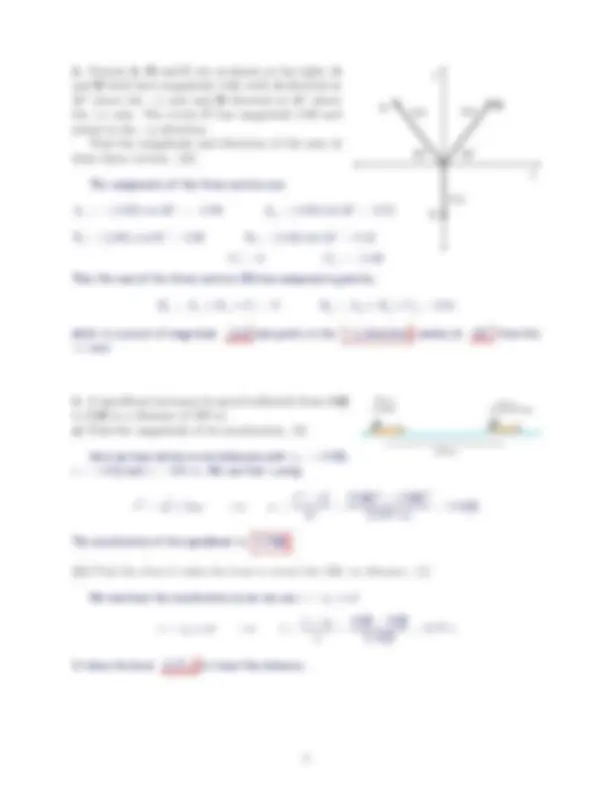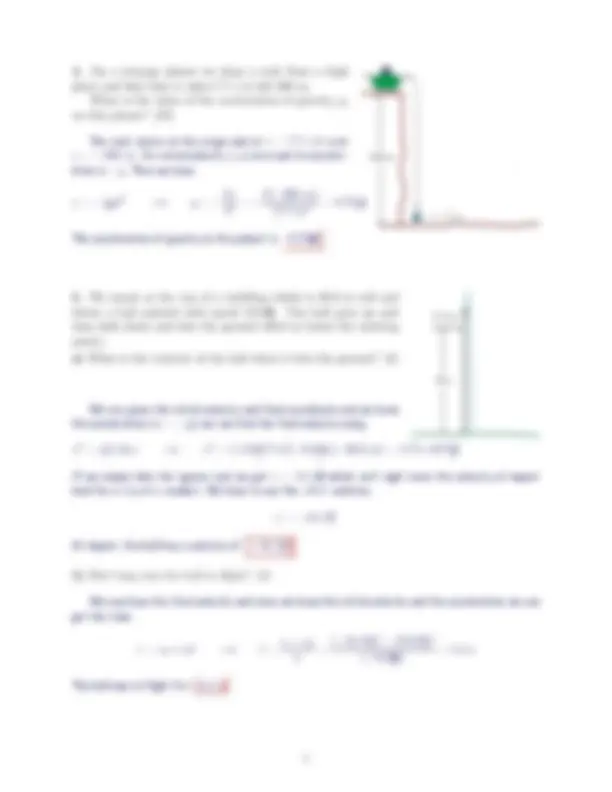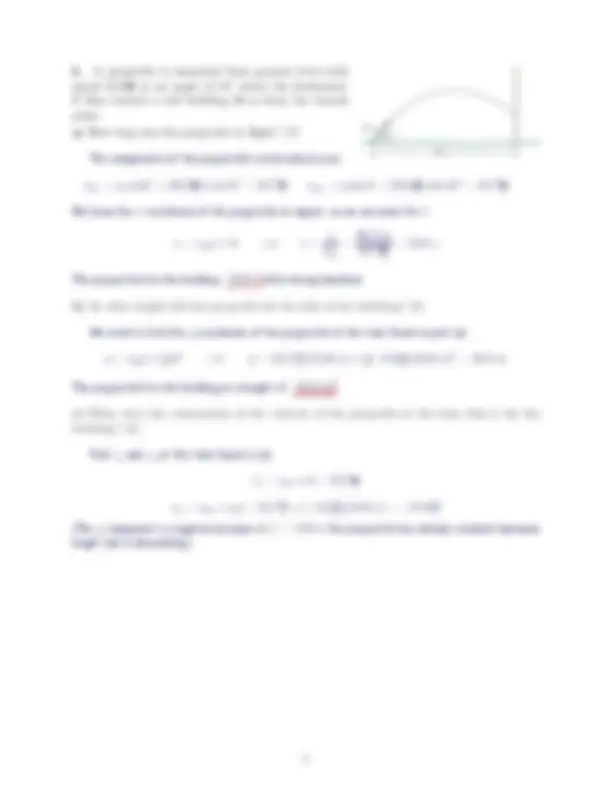





Study with the several resources on Docsity

Earn points by helping other students or get them with a premium plan


Prepare for your exams
Study with the several resources on Docsity

Earn points to download
Earn points by helping other students or get them with a premium plan
Community
Ask the community for help and clear up your study doubts
Discover the best universities in your country according to Docsity users
Free resources
Download our free guides on studying techniques, anxiety management strategies, and thesis advice from Docsity tutors
Material Type: Exam; Professor: Murdock; Class: Algebra-based Physics I; Subject: PHYS Physics; University: Tennessee Tech University; Term: Fall 2005;
Typology: Exams
1 / 7

This page cannot be seen from the preview
Don't miss anything!




Name
Phys 2010, NSCC Exam #1 — Fall 2005
Total (100)
Multiple Choice
Choose the best answer from among the four!
a) 0 .01 cm^2 b) 100 cm^2 c) 104 cm^2 d) 106 cm^2
a) 2. 0 b) 3. 0 c) 10. 0 d) 15. 0
a) 4 .0 tan θ b) 4 .0 cos θ c) (^) sin^4.^0 θ d) (^) tan^4.^0 θ.
a) Its mass will be the same but its weight will change. b) Its weight will be the same but its mass will change. c) Its mass and weight will remain the same. d) Both its mass and weight will be different.
a) 1 kg s·m b) 1 kg s· 2 m c) 1 kg·m
2 s d) 1 kg·m
2 s^2
Problems
Show your work and include the correct units with your answers!
Change 11. 4 cm s 3 to units of m hr^3. (7)
4 cm s 3 =
(
) (^ 1 m 100 cm
) 3 ( (^) 60 s
1 min
) (60 min
1 hr
) = 4. 1 × 10 −2 m hr^3
200 m
t = 7.7 s
The rock starts at the origin and at t = 7.7 s it is at x = −200 m. Its initial velocity v 0 is zero and its acceler- ation is −g. Then we have
x = −^12 gt^2 =⇒ g = −
2 x t^2
2(−200 m) (7.7 s)^2
= 6. (^75) sm 2
The acceleration of gravity on this planet is 6. 75 m s 2.
12.0 m/s
80 m
a) What is the velocity of the ball when it hits the ground? (8)
We are given the initial velocity and final coordinate and we know the acceleration (a = −g); we can find the final velocity using
v^2 = v 02 +2ax =⇒ v^2 = (+12m s )^2 +2(− 9. 8 m s 2 )(− 80 .0 m) = 1. 71 × 10 3 m s 22
If we simply take the square root we get v = 41. 4 m s which isn't right since the velocity at impact must be a negative number. We have to use the other solution,
v = − 41. 4 m s
At impact, the ball has a velocity of − 41. 4 m s.
b) How long was the ball in flight? (6)
We now have the final velocity and since we know the initial velocity and the acceleration we can get the time:
v = v 0 + at =⇒ t =
v = v 0 a
(− 41. 4 m s ) − (12. 0 m s ) (− 9. 8 m s 2 )
= 5.4 s
The ball was in flight for 5 .4 s.
45 o
35 m/s
90 m
a) How long was the projectile in flight? (7)
The components of the projectile's initial velocity are
v 0 x = v 0 cos θ = (35. 0 m s ) cos 45◦^ = 24. 7 m s v 0 y = v 0 sin θ = (35. 0 m s ) sin 45◦^ = 24. 7 m s
We know the x coordinate of the projectile at impact, so we can solve for t:
x = v 0 xt + 0 =⇒ t =
x v 0 x
90 .0 m
= 3.64 s
The projectile hits the building 3 .64 s after being launched.
b) At what height did the projectile hit the side of the building? (6)
We need to find the y coordinate of the projectile at the time found in part (a).
y = v 0 yt + 12 at^2 =⇒ y = (24. 7 m s )(3.64 s) + 12 (− 9. (^8) sm 2 )(3.64 s)^2 = 25.0 m
The projectile hits the building at a height of 25 .0 m.
c) What were the components of the velocity of the projectile at the time that it hit the building? (6)
Find vx and vy at the time found in (a):
vx = v 0 x + 0 = 24. 7 m s
vy = v 0 y + ayt = 24. 7 m s + (− 9. 8 m s 2 )(3.64 s) = − 11. 0 m s
(The y component is negative because at t = 3.64 s the projectile has already reached maximum height and is descending.)
You must show all your work and include the right units with your answers!
Ax = A cos θ Ay = A sin θ A =
√ A^2 x + A^2 y tan θ = Ay/Ax
vx = v 0 x + axt x = v 0 xt + 12 axt^2 v x^2 = v 02 x + 2axx x = 12 (v 0 x + vx)t vy = v 0 y + ayt y = v 0 yt + 12 ayt^2 v^2 y = v 02 y + 2ayy y = 12 (v 0 y + vy)t
g = 9. (^80) sm 2 R =
2 v 02 sin θ cos θ g
Fnet = ma Weight = mg